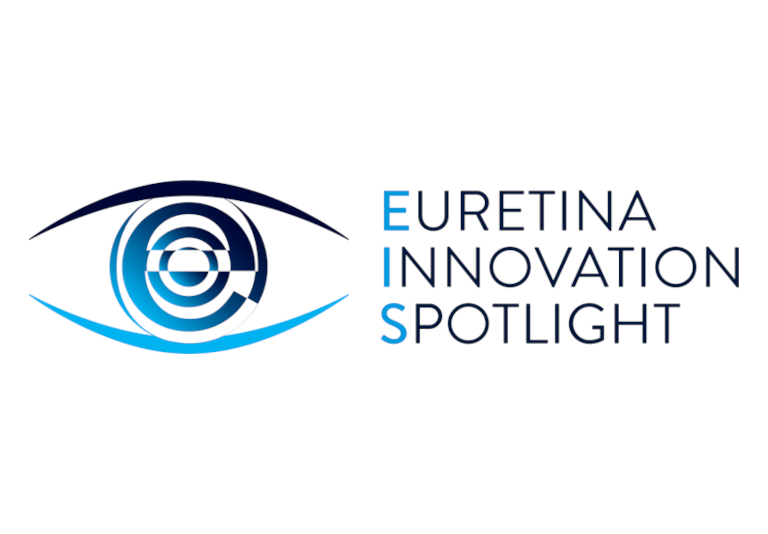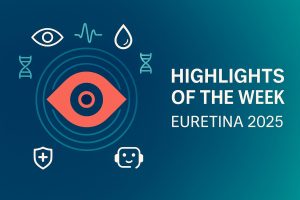Representatives from industry discussing their companies’ innovations for patients with geographic atrophy (GA) were featured in the first session of Euretina Innovation Spotlight (EIS) 2025.
Leading off the session, Dr Andrew Want, Astellas Pharma, described his company’s development of cell and gene therapies. He began by presenting information on avacincaptad pegol, an intravitreal complement 5 inhibitor that was shown to slow progression of GA lesion growth in premarketing clinical trials. Dr Want noted that avacincaptad pegol was approved in the United States for the treatment of GA in 2023 and that Astellas is pursuing approval by other regulatory agencies.
He also discussed two cell therapies – ASP7317 and ASP2020 – that are being developed as restorative treatment for patients with more established GA. ASP7317 is a subretinal human embryonic stem cell-derived RPE cell therapy whereby functioning RPE cells are transplanted to replace dead and damaged cells to restore retinal homeostasis and to help improve visual function. ASP7317 is currently in phase 1b clinical development.
ASP2020 is a next generation cell therapy that is in preclinical development. Derived from a universal donor cell program, the technology is considered a powerful tool to solve or reduce the problem of immune rejection with cell therapy. It is thought that the ASP2020 RPE universal cells could help restore photoreceptor metabolism and outer segment function, potentially leading to improved visual function.
“By combining our in-house ophthalmology expertise and rapidly expanding regenerative medicine capabilities we are hoping we can accelerate the development of these therapies and try to reduce the time needed to deliver them to patients,” Dr. Want said.
Dr Reza Safaei, Apellis, discussed the company’s FDA-approved therapy for GA – pegcetacoplan, with a focus on results from GALE, an open-label extension study, which includes evidence that the treatment was associated with tissue preservation.
Continuing, Dr Safaei said, “This is not the end, this is the beginning, and we are committed to bring the community forward.”
With that lead-in, he discussed functional OCT (OCT-F) as a new technology that is being introduced at EURETINA. This imaging technology combines artificial intelligence with OCT imaging, provides a full retina sensitivity heat map, and is designed to simulate the visual impairment perceived by the patient.
“We believe this will be a significant improvement in the physician-patient interaction,” Dr Safaei said.
In the last presentation of the session, Dr Ralf Hornig, Science Corporation, spoke about the company’s PRIMA implant system for restoring vision in patients with late-stage GA. Dr. Honig described the system, reported results form PRIMAvera, a pivotal multicenter study, and showed videos from implanted patients, one who was able to read with the implant and the other who was able to do crossword puzzles.
“With this system, most subjects can read numbers, letters and words, and some are able to read longer text. And there has been no decrease in mean residual natural vision, which is an important safety finding,” he said.
Dr. Hornig announced that the PRIMA implant is currently under review to receive the CE mark and that the company is currently working on a next generation iteration that will provide improved resolution, a larger field of view, and modified external glasses.









